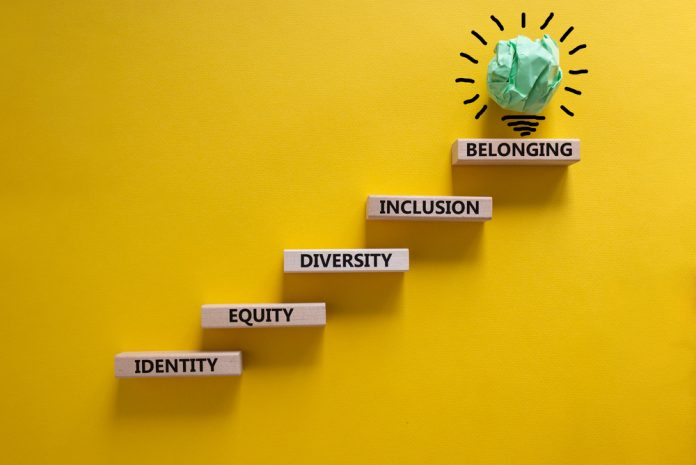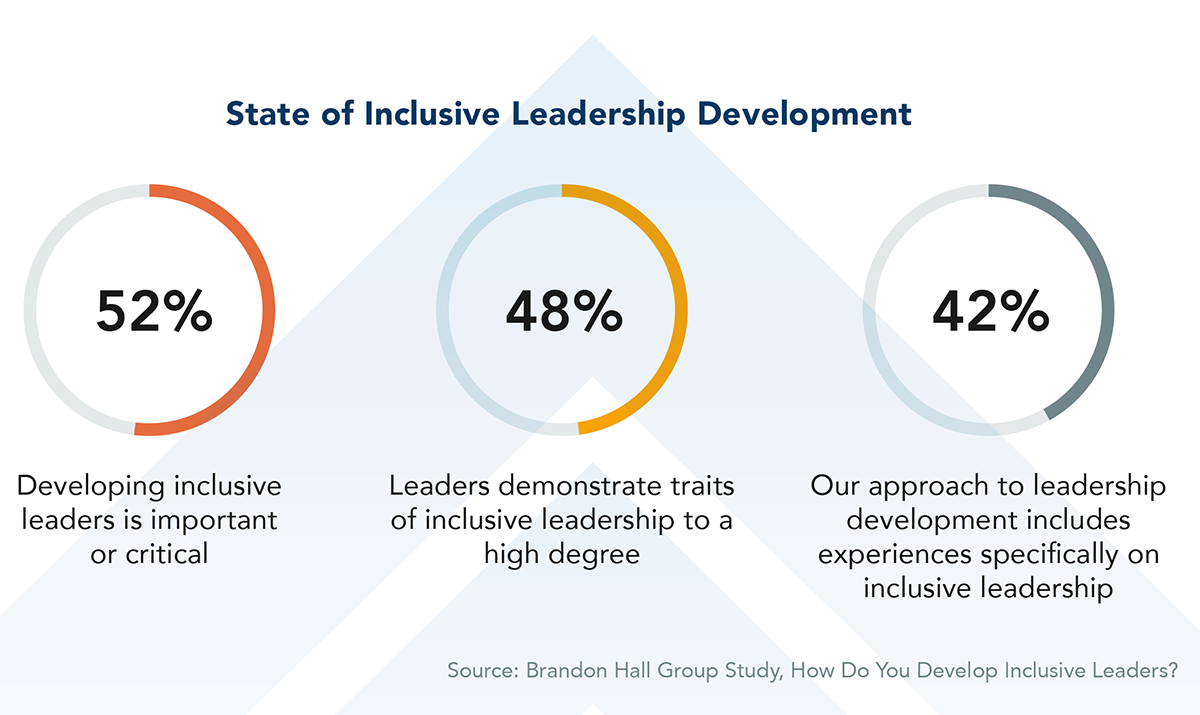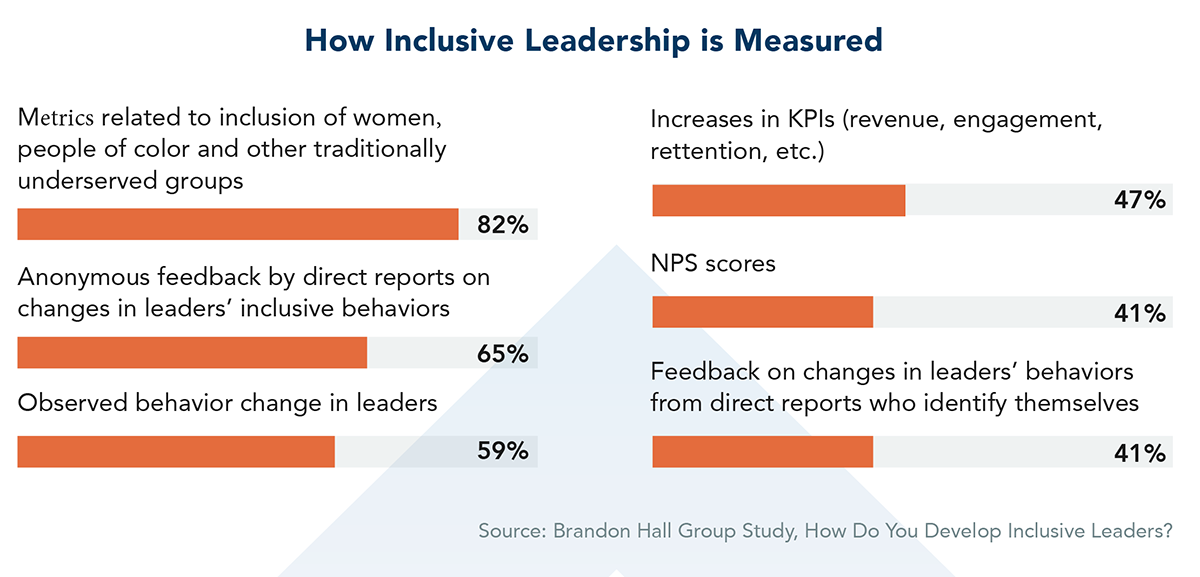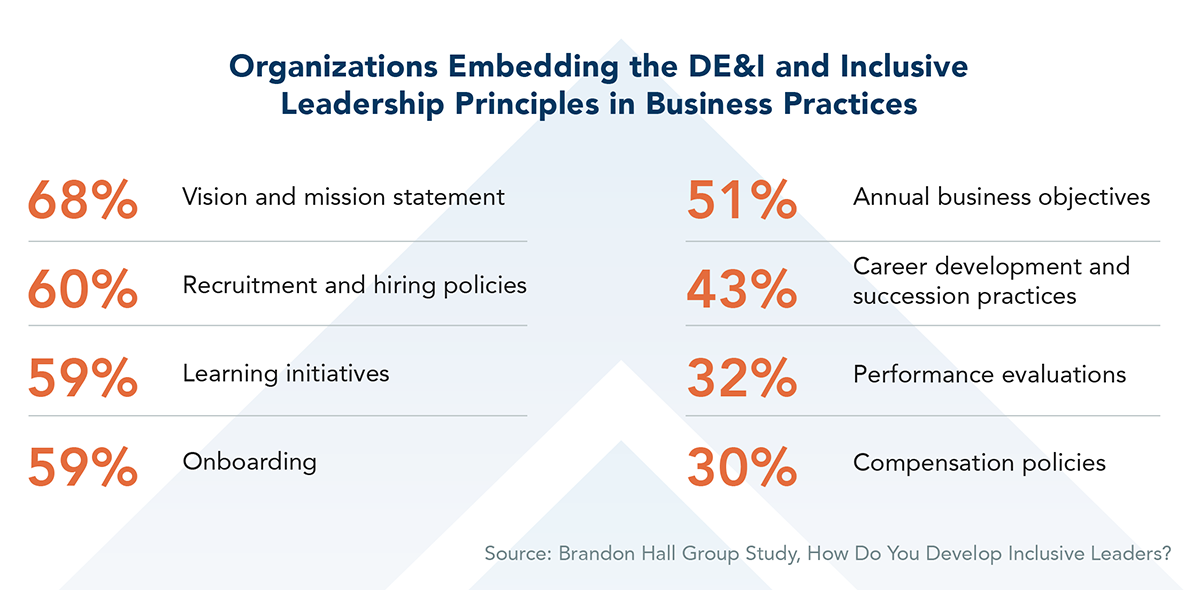
Almost three years after diversity, equity, and inclusion (DE&I) exploded into the corporate consciousness, it remains more of a goal or intention than a reality. After the death of George Floyd in 2020, employers were quick to start DE&I awareness programs, launch diversity councils, require unconscious bias training, and create other “programs.”
But most organizations have failed to embed the principles and values DE&I, so they become part of the corporate culture. Brandon Hall Group research shows that 45 percent of organizations had a fully developed DE&I strategic plan in 2022, with another 31 percent developing one.
Inclusive leadership emerged as a critical capability to help organizations adapt to diverse customers, markets, ideas, and talent. Brandon Hall Group’s study, How Do You Develop Inclusive Leaders?, revealed that at least 80 percent of organizations launched some sort of inclusive leadership training at all leadership levels (frontline through C-Suite), though the results so far are mixed.

Training leaders on inclusive leadership is necessary, but it is only the first step in the journey. There are many inclusive leadership behaviors. Some are easy to understand, but demonstrating them consistently is not easy and takes time and commitment from the leader. For many people, becoming more inclusive is a new concept and may not come naturally. Real change is elusive and difficult to measure. Organizations must be able to see a demonstration of inclusive leadership to determine whether they are making progress in building a culture of inclusion.

Becoming a more inclusive leader is potentially one of the biggest challenges of a person’s career. It takes commitment from the individual, but the organization must set an example and expectation through its commitment to DE&I.
It is difficult to be enthusiastic about the rise of inclusive leadership when, in 57 percent of organizations, less than one-fifth of high-level leaders are from diverse and traditionally under-represented groups. In addition, when measuring inclusion of under-represented groups, most organizations focus on measuring demographic diversity rather than equity in engagement scores, performance ratings, recognition, participation in cross-functional team projects, or participation in various forms of training.
Employers that want more inclusive leaders must place more emphasis on embedding the principles of DE&I and inclusive leadership across the enterprise in a variety of ways. This is a work in progress for most organizations.

Organizations that want to develop more inclusive leaders as a strategy toward becoming more diverse, equitable and inclusive must consider several questions. They include:
- What are our greatest barriers to having a more inclusive culture?
- Do our leaders consistently demonstrate the values of our organization?
- Do we have leaders with the interest and ability to truly tap into the talents and motivations of their teams to collaborate, empower and inspire rather than wield their authority?
- Do we have leaders who consistently demonstrate their commitment to diversity, equity and inclusion and will challenge the status quo when necessary?
- Do we have leaders who actively seek to understand those around them — including people from different cultures and backgrounds — and listen, empathize and adapt to their points of view?
- Are there particular strategies or behaviors that are in the most serious need of attention?
Too many organizations provide training on inclusive leadership, proclaim its importance, pledge commitment and then hope for the best. That’s not enough. The only way to determine whether inclusive leadership is taking hold is to see it demonstrated. That means organizations must consistently reinforce training and hold leaders accountable for demonstrating inclusion themselves and for enabling their direct reports to practice and demonstrate inclusive leadership behaviors.
Here are three behaviors for organizations to observe and measure to determine whether leaders are truly becoming more inclusive:
-
Demonstrated commitment.
You will know a leader is committed to driving an environment of inclusion when they have the courage and confidence to speak up when they see exclusion and are willing to challenge the status quo.
In addition, leaders committed to inclusion are willing to hold their direct reports accountable for learning about DE&I and being inclusive with their own teams. Inclusive leaders will also get involved — and encourage the involvement of others — in activities such as ERGs, diversity council, community outreach efforts and just simply illustrating their willingness to embrace and engage everyone for who they are and the talents and experiences they bring.
How can you measure this? First of all, just observe. But you can also do 360s and ask for anonymous feedback from people the leader works with about changes they have seen. The best thing about demonstrated commitment is that it tends to be contagious. When leaders show their resolve, it gives others permission or incentive to do the same.
-
Demonstration of bias awareness.
It’s one thing to advocate for inclusion. But when leaders challenge their own biases and encourage others to be aware of preconceptions, that brings inclusive leadership to a higher level.
It is important for us to consistently evaluate our preconceptions, be transparent about them and ask questions and explore issues that might influence those biases or preconceptions. When a leader says, “I think I may not have a full understanding, can you help me? or “I think I may have a blind spot here; what am I missing?” it sets an example for others to be curious and educate themselves. This can go a long way toward building a culture of inclusion and openness.
-
Demonstration of empathy.
This is an extension of demonstration of bias awareness, but important to point out on its own. Employees aren’t looking for their leaders to listen and understand their experience as an intellectual or check-the-box exercise. They want leaders who can really understand others and give them a sense of feeling heard and belonging. When leaders show humility and empathy, it makes them more approachable and builds trust.
Demonstrating commitment to inclusion and being transparent about biases are both important, but demonstrating empathy, humility and understanding fosters an inclusive culture that makes organizations stronger.



